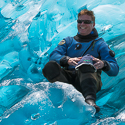Top 5 Tips for Shooting Nudibranchs
Text and photography by: Todd Winner
Let's face it, underwater photographers are obsessed with nudibranchs and California has more than its share of the colorful sea slugs. But how can we create images that stand out from the crowd? Below are five of my favorite techniques for producing stunning nudibranch images.
Interesting Backgrounds:
One of the easiest ways to improve your nudibranchs shots is by finding ones on interesting backgrounds. Look for nudibranchs on sponges, kelp and sea fans.
[caption id="attachment_1160" align="aligncenter" width="800"]
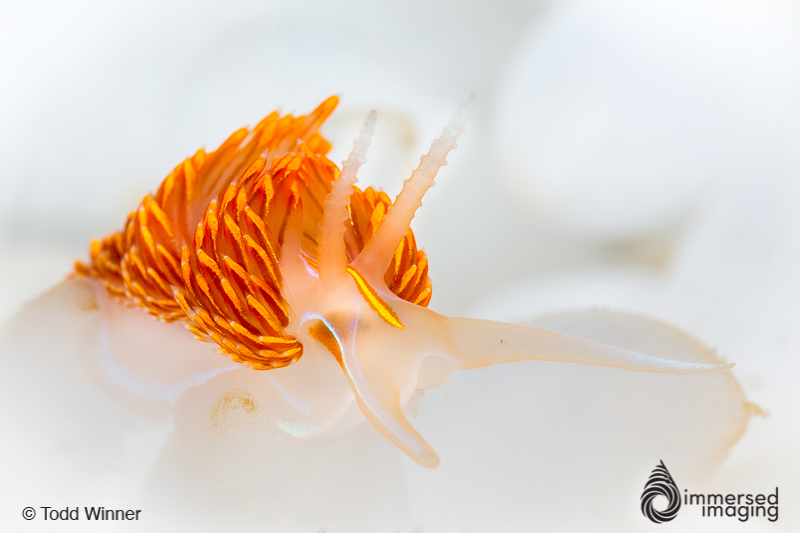
Hermissenda nudibranch on squid eggs. Catalina Island, California[/caption]
Hermissenda nudibranch on squid eggs. Catalina Island, California,
Canon 5D Mark III,
Canon 100mm Macro Lens,
Nauticam Housing, 1/200, f/22, ISO 100
Snoot lighting:
If used properly macro snoots can produce stunning results. Setting up a snoot image underwater can be frustrating. If possible have someone else hold and aim it for you.
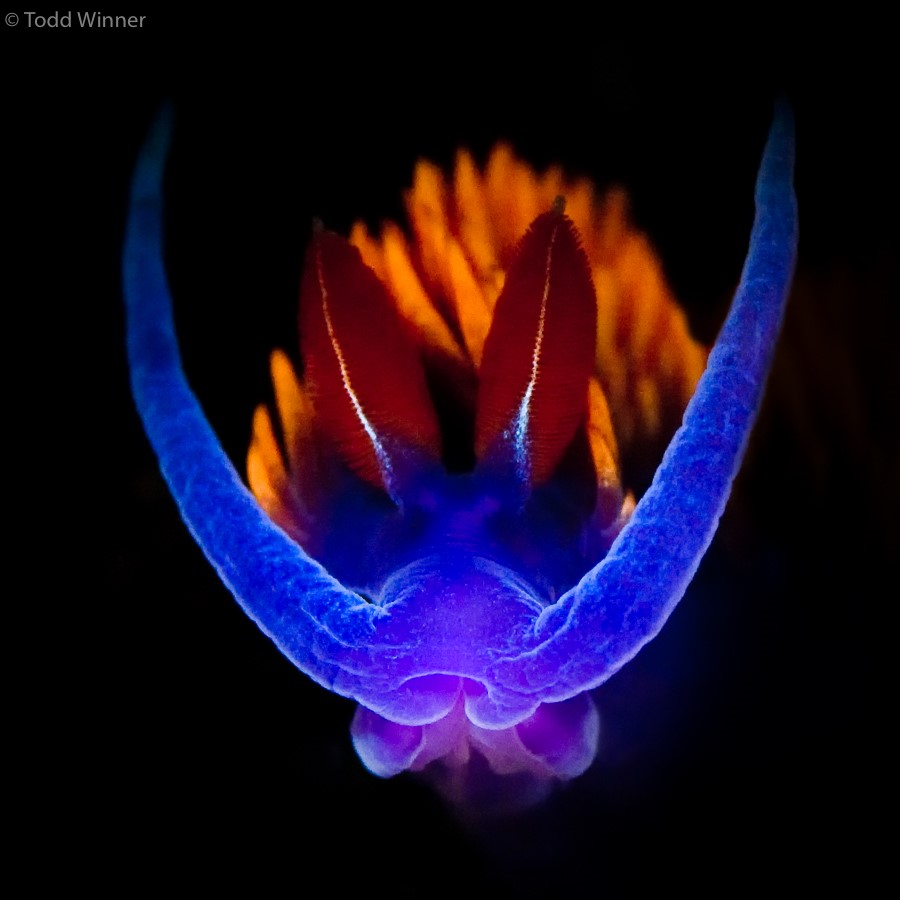
Spanish Shawl nudibranch. Catalina Island, California, Nikon D2X,
Nikon 60mm Macro Lens, 1/250, f/10, ISO 100
Isolate your subject:
Isolate your subject from the background by angling your camera up. If you can shoot into the water column you can easily achieve black backgrounds by stopping down the shutter and aperture with a low ISO.
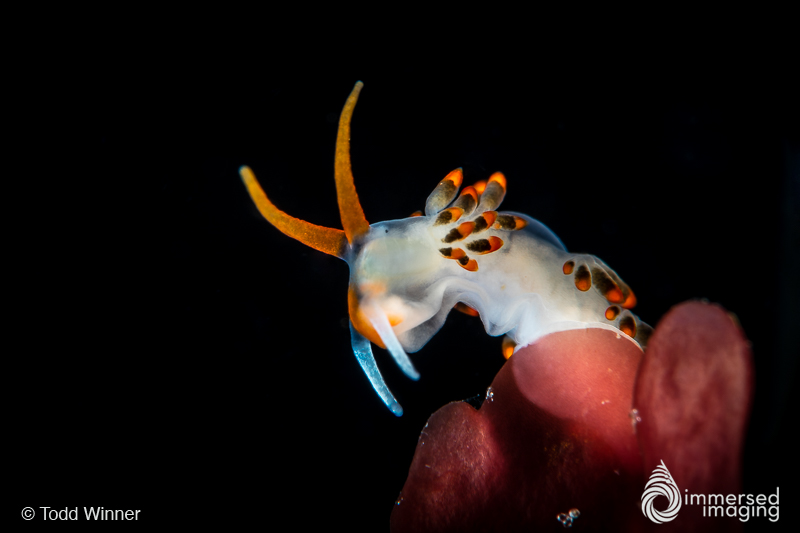
Trinchesia laguna nudibranch. San Miguel Island, California,
Canon 5DS R,
Canon 100mm Macro Lens,
Nauticam SMC and Multiplier, 1/200, f/25, ISO 160
Blue Backgrounds:
Using the same techniques that we use to isolate a subject with a black background we can create blue backgrounds by simply aiming toward the sun and opening up the shutter or increasing the ISO. If you use the ISO method you will need to readjust aperture and strobe power.
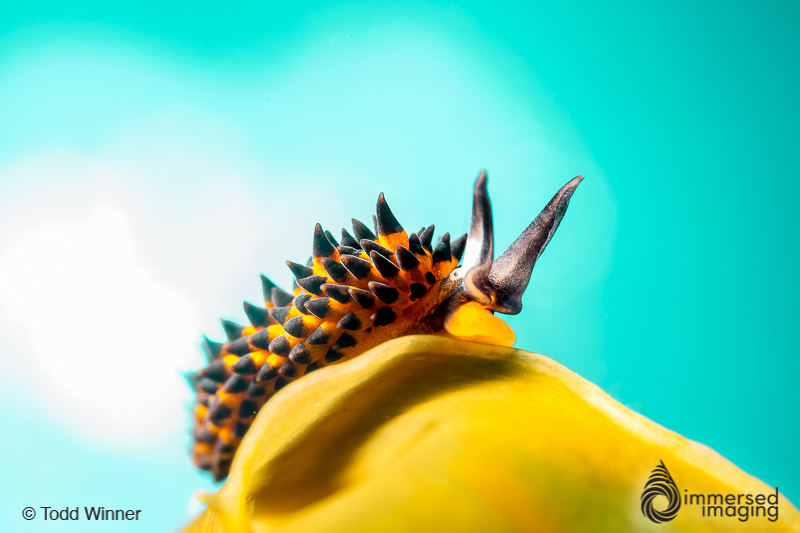
Placida cremoniana nudibranch. Catalina Island, California, Canon 5D Mark III, 100mm Macro,
Nauticam SMC Super Macro Converter and
Subsee +5, 1/200, f/18, ISO 640
Depth of Field:
Use shallow depth of field to create soft dreamy backgrounds and direct your viewers to the important features of your subject.
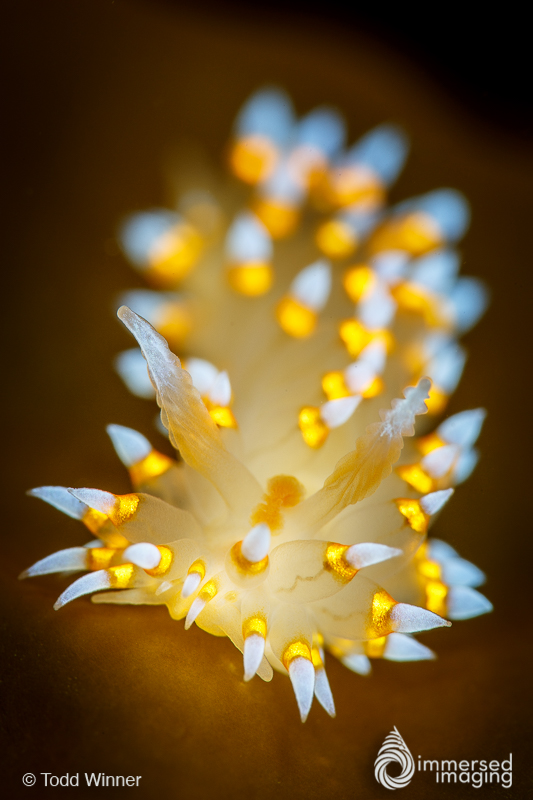
Janolus barbarensis nudibranch. Catalina Island, California, Canon 5D Mark III, Canon 100mm Macro Lens, Nauticam SMC Super Macro Converter, 1/100, f/14, ISO 160
 Hermissenda nudibranch on squid eggs. Catalina Island, California[/caption]
Hermissenda nudibranch on squid eggs. Catalina Island, California, Canon 5D Mark III,Canon 100mm Macro Lens, Nauticam Housing, 1/200, f/22, ISO 100
Hermissenda nudibranch on squid eggs. Catalina Island, California[/caption]
Hermissenda nudibranch on squid eggs. Catalina Island, California, Canon 5D Mark III,Canon 100mm Macro Lens, Nauticam Housing, 1/200, f/22, ISO 100
 Spanish Shawl nudibranch. Catalina Island, California, Nikon D2X, Nikon 60mm Macro Lens, 1/250, f/10, ISO 100
Spanish Shawl nudibranch. Catalina Island, California, Nikon D2X, Nikon 60mm Macro Lens, 1/250, f/10, ISO 100
 Trinchesia laguna nudibranch. San Miguel Island, California, Canon 5DS R, Canon 100mm Macro Lens, Nauticam SMC and Multiplier, 1/200, f/25, ISO 160
Trinchesia laguna nudibranch. San Miguel Island, California, Canon 5DS R, Canon 100mm Macro Lens, Nauticam SMC and Multiplier, 1/200, f/25, ISO 160
 Placida cremoniana nudibranch. Catalina Island, California, Canon 5D Mark III, 100mm Macro, Nauticam SMC Super Macro Converter and Subsee +5, 1/200, f/18, ISO 640
Placida cremoniana nudibranch. Catalina Island, California, Canon 5D Mark III, 100mm Macro, Nauticam SMC Super Macro Converter and Subsee +5, 1/200, f/18, ISO 640
 Janolus barbarensis nudibranch. Catalina Island, California, Canon 5D Mark III, Canon 100mm Macro Lens, Nauticam SMC Super Macro Converter, 1/100, f/14, ISO 160
Janolus barbarensis nudibranch. Catalina Island, California, Canon 5D Mark III, Canon 100mm Macro Lens, Nauticam SMC Super Macro Converter, 1/100, f/14, ISO 160





